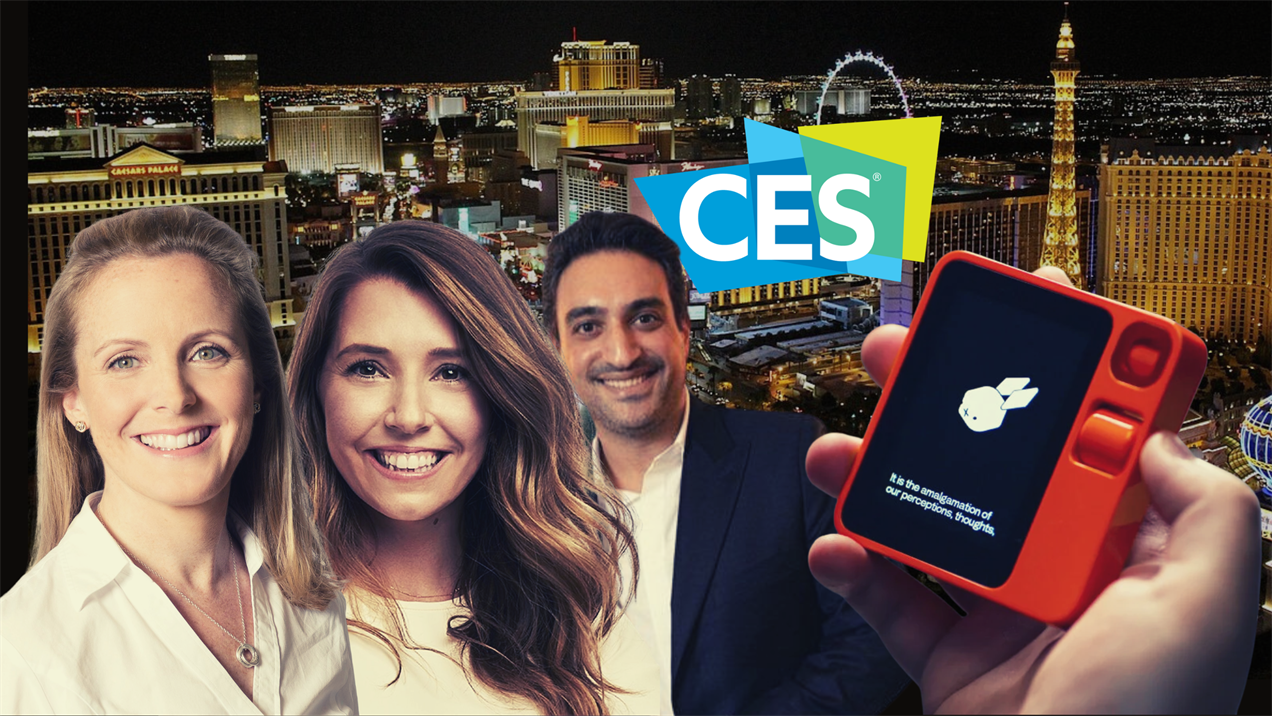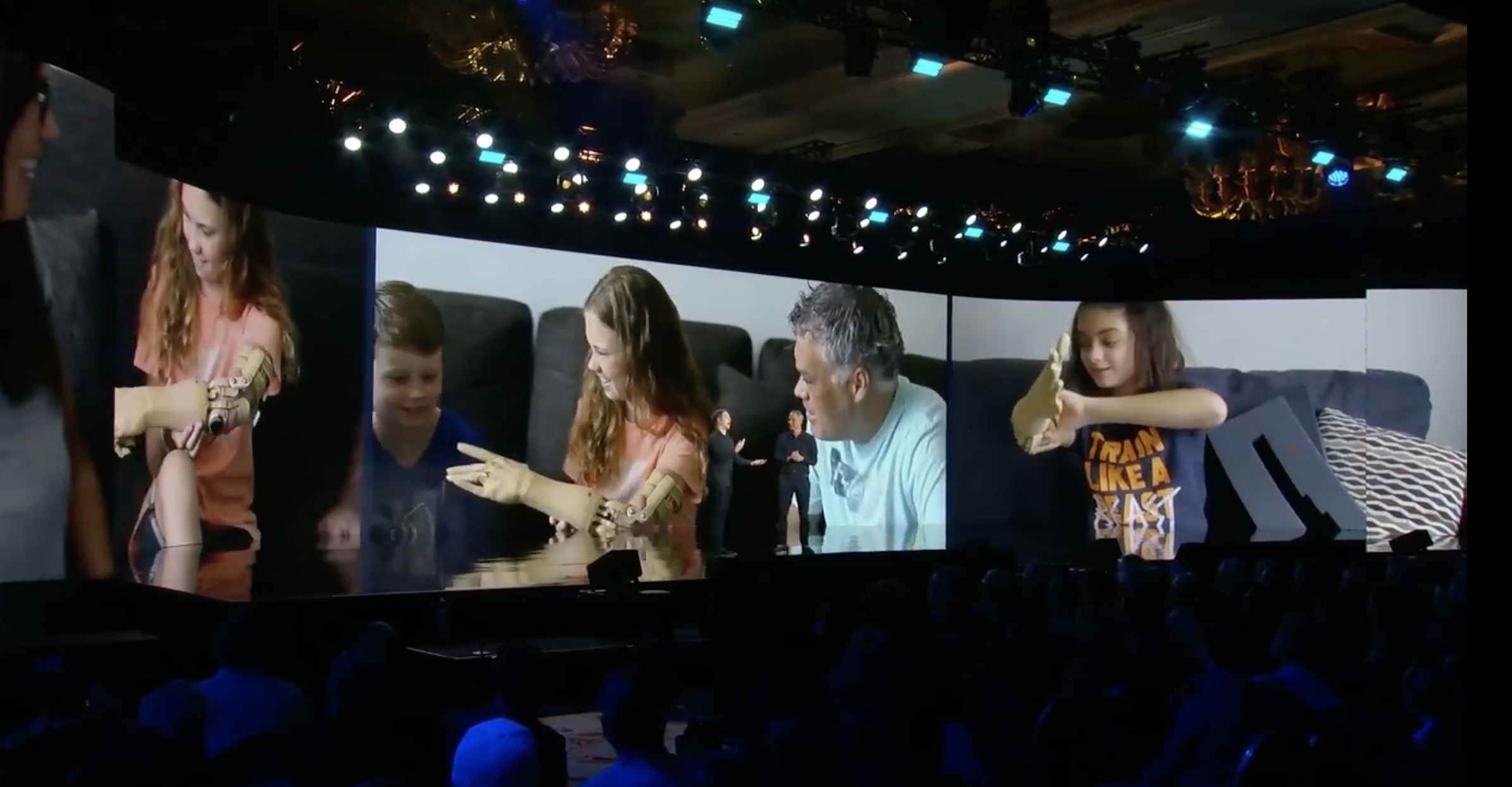Latest News
From AI ‘rabbits’ to smart cars: 7 marketing experts on future tech at CES
From AI ‘rabbits’ to smart cars: 7 marketing experts on future tech at CES
The CES show in Las Vegas revealed a treasure trove of futuristic technology – but what are the implications of the latest consumer gadgets for marketers? PMW spoke to experts on the conference floor to talk about AI chips in cars, pocket assistants, and smart homes.

By Robin Langford | 12 January 2024
The Consumer Electronics Show (CES) is one of the biggest events in the global technology calendar, attracting around 130K attendees and thousands of exhibitors in a sold-out West Hall of the Las Vegas Convention Center.
From the inception of the smartphone to the advent of generative AI, throughout history the arrival of new technology often brings new data touchpoints and implications for marketers.
Key speaker highlights from this year included Siemens President and CEO Roland Busch sharing future visions for the technology company, including partnerships with Amazon Web Services, Blendhub, Red Bull Racing, Sony and Unlimited Tomorrow and plans for an ‘industrial metaverse’.

Meanwhile, in the first-ever beauty keynote at the show, L’Oréal Groupe CEO Nicolas Hieronimus revealed the CES 2024 Innovation Award-winning technology, the AirLight Pro, which uses technology to care for multiple hair needs while reducing environmental impact.
The technology is designed to adapt to the needs of the individual user with hardware, firmware and an app to make it possible for every user to customize the settings for their individual needs.
One of the standout innovations making waves at this year’s conference was “the iPhone of AI,” the Rabbit R1. which debuted at CES 2024 as an AI-powered pocket companion that the start-up tech company hopes will become your personal AI assistant.
The device has now launched for pre-orders with a $199 price tag, selling 10,000 units in a single launch day, effectively selling out already.
To learn more about how technology innovations such as the AirLight Pro and the Rabbit R1 could impact the future of marketing, PMW spoke to a panel of seven marketing experts on what caught their eye at this year’s show.
“Marketers need to adapt their tactics to encompass these new touchpoints so they can effectively target and – crucially – measure the impact of their campaigns.”
Lauren Wetzel, Chief Operating Officer, InfoSum, said: “As consumers embrace new devices and platforms, marketers need to adapt their tactics to encompass these new touchpoints so they can effectively target and – crucially – measure the impact of their campaigns. To get the most from this measurement, they need to focus on the metrics that really matter, whether these revolve around reach, engagement or outcomes.
“With the forthcoming deprecation of third-party cookies already hitting Chrome users, marketers have a chance to forge entirely new processes that offer genuine performance insights and have privacy at their core. CES gives marketers an opportunity to talk to publishers, identity providers, measurement specialists and technology vendors with a view to establishing partnerships that can help them build future-proofed strategies.”
“Consumers are unlikely to be so blinded by shiny new features that they overlook how smart devices use their data”
Anthony Flaccavento, GM of Americas, Ogury, said: “Today’s privacy-savvy consumers are unlikely to be so blinded by shiny new features that they overlook how smart devices use their data – including the latest crop of AI-powered tech unveiled at this year’s CES. Looking beyond the array of intelligent vacuums, screens, and wearables, shrewd marketers understand there is a growing need to meet rising consumer expectations of robust data privacy.
“Effectively harnessing the scope digital devices offer for always-on user connection now increasingly means finding new ways to achieve precise targeting at scale, without relying on identifiers. Now that Google has started the long-promised phase out of third-party cookies, there is an urgent need for industry players to start adopting tried and tested alternative solutions, specifically those built without the use of personal information.”
“Many conversations at CES are around attention metrics and how they can help marketers better understand the impact of campaigns.”
Stacy Bohrer, VP of Sales US, OpenX said: “How new technologies affect consumer behaviour is a critically important consideration for brands as they seek to find the best channels and platforms to boost engagement with their target customers. As such, many conversations at CES are around attention metrics and how they can help marketers better understand the impact of campaigns. Knowing the aspects of a campaign that attract the most eyeballs means marketers can optimise accordingly to reach more of their desired audiences and drive ad dollars.
“With the deprecation of the third-party cookie already underway, conversations are also centred on how marketers can explore alternative, cookieless solutions, and the importance of experimenting to find the technologies that work best for them. To this end, this year they’ll be looking to form partnerships based on trust and transparency; ones that give them full control over targeting and measurement capabilities.”
“While AI brings efficiencies and new capabilities to marketing, it also necessitates more sophisticated tooling for brand safety”
Andrew Serby, Chief Commercial Officer at Zefr, said: “New technology and AI tools promise to aid marketers in many ways, but they also pose newfound challenges in both brand safety and content moderation. A significant rising concern is the increase in low-quality, misleading ‘clickbait’ content, which may not align one-to-one with a brand manager’s choices. AI-based solutions are emerging, assisting marketers in screening digital media, as well as industry bodies like GARM developing standards for digital content monetization and defining universally inappropriate content. While AI brings efficiencies and new capabilities to marketing, it also necessitates more sophisticated tooling for brand safety and oversight, highlighting a consistently evolving landscape.
“New innovations introduce an element of interaction to everyday objects and devices”
Sarah Lawson Johnston, CRO, Covatic: “CES has showcased a new wave of user-centric innovations that will transform the way consumers interact with and discover brands. A prominent theme throughout the event is the rise of smart consumer electronics and AI which introduce an element of interaction to everyday objects and devices; such as Intel’s announcement of an AI chip to be used in cars and Samsung’s advancements to smart home devices. While making consumers’ lives even more connected, these innovations also provide a wealth of opportunities for advertisers to engage consumers. Brands that leverage these emerging technologies can tap into new audience segments and boost brand reach.”
“Smart enablement applications in household devices will offer personalised consumer experiences and messaging”
Ed Wale, VP International at LG Ad Solutions, said: “The future of entertainment is going to be a big theme. In CTV, leading OEMs [original equipment manufacturers] are introducing cutting-edge technology in both hardware and software, revolutionising the entertainment landscape. Innovations like portable wireless screens and in-car entertainment are set to bring entertainment to audiences on the move, expanding the reach of global streaming platforms.
“Additionally, smart enablement applications in household devices will offer personalised consumer experiences and messaging. For marketers, more platforms will equate to richer datasets, allowing them to reach audiences in new environments, with a more targeted approach. In an increasingly globalised world, marketers will benefit from working with platforms that allow them to activate ad campaigns across multiple markets with a single click of a button.”
“Further competitive tension in the streaming wars… will mean a rapid innovation rush, with platforms boosting their addressability tech for enhanced targeting capabilities.”
Lionel Bensoussan, EVP Americas, Equativ, said: “In the CTV space, discussions are focused on how the industry is evolving amid streaming overload. As more consumers cut back on paid subscriptions, platforms are racing to roll out ad-supported services at lower prices – adding further competitive tension to the streaming wars. This is going to mean a rapid innovation rush, with platforms boosting their addressability tech for enhanced targeting capabilities. From a consumer point of view this shift will improve the user experience by delivering more seamless and relevant ad content, while advertisers are more likely to win ad dollars and retain audiences.”